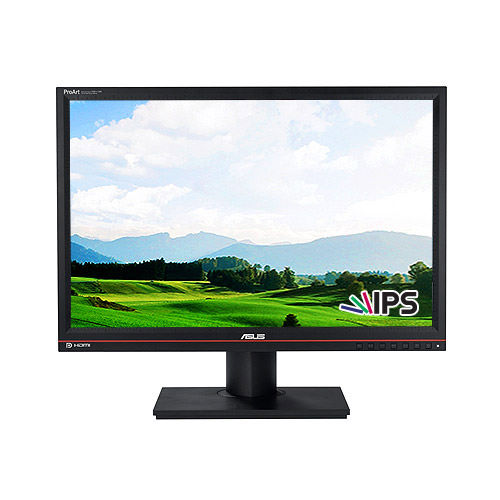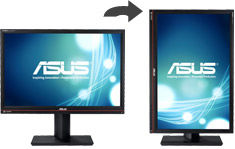 |
| Asus PA246q |
Monitors are not the most exciting bits of photo equipment. I think most of us see them as a fairly uncritical part of the workflow that helps us to get from the exciting bit at the start - the camera - to the exciting bit at the end - the print. But in the process of buying a new monitor I've come round to a different view.
My last two monitors were hefty but reliable - CRTs from Ilyama's Visonmaster range. The original one I never bothered to calibrate, having compared it with calibrated monitors and various printed output. Then I upgraded to a bigger model, noticed a green cast straightaway, and got a man in. £25 quid well spent; Simon threw in a few Lightroom tips and assured me the calibration would be good for six months or so. A few months later and things started to go downhill, with flickers, blanks and a constant need to recentre the image. With a vague budget of £300, I started my research for a replacement.
All I knew initially was I wanted a bigger screen without losing any more desk space. That means LCD, but an initial search came up with a bewildering choice, especially at the cheap end. The first thing to narrow the search was technology: IPS (in-plane switching) vs TFT (twisted nematic). TFT can give higher contrast and a faster refresh rate, but at the expense of colours that can alter as you move your head in relation to the screen. Crisp as it is, I find the glossy screen of my Macbook very frustrating due to both this issue and reflections, so a matt IPS screen was what I was after.
With most of the cheap screens (under £200) being TFT, that narrowed things down fairly quickly. At the £200-250 mark were a bunch of similar looking 23" IPS screens by the likes of NEC and HP. Unfortunately they were all glossy and proportioned 'widescreen'. The 16:9 aspect ratio is popular as it fits the proportions of a film screen. But for photography it means a full-screen view of a portrait orientated image is much smaller than in landscape. Looking for squarer screens dropped the choice again quickly - 4:3 is pretty much restricted to 19" screens, any bigger are mainly 16:9 with the odd one 16:10. Most of the 16:10 screens were in the professional bracket running from £850 up.
That was more than I wanted to spend, ideally, but a bit more research narrowed things down: as of 2011, there is plenty of choice below £250 and above £850, but only two screens in between. Both of these are near identical 24", IPS, 16:10 wide-gamut models, around the £400 mark, by Dell and Asus. The cheapest similar 'pro' monitor is an NEC model (PA241W) - with an almost identical spec but more than double the price. After doing some reading on wide-gamuts (some will warn you it makes colour management a nightmare, with web-pages in fluoro colours) I went for the Asus, mainly on the basis that it was a newer model. Amazon delivered it within 36 hrs. Reviews warn of quality issues with dead pixels and uniformity issues, but a robust guarantee was some reassurance.
Having got set up, checked for dead pixels and found none, a few things were immediately impressive. Firstly the size - both saving on desk space, and increasing screen size. Build seems very solid and the stand is great, allowing easy rotation from normal landscape to portrait orientation. Any wide gamut concerns are allayed with an easily implemeted sRGB mode, though with a colour-aware web browser like Firefox I've not used it much. Brightness was very high and needed turning right down to around 20%, with the only slight quality issue being a slightly 'hotter' area bottom centre. Overall colours looked very good and it was reassuring to see them change very little after calibration. So far so good, monitor replaced, back to business.
a quick switch to portrait is a real boon
What I hadn't expected was the enjoyment boost from working with such a quality piece of kit. It reminded me of switching from 35mm to medium format film ten years back and suddenly spending hours over the lightbox. It also made me think a little harder about what is the end result of my photography. How much actually makes it into print - perhaps 2%? And when published, that's usually at less than A4 apart from the odd double-page spread, and bar scrutinising the repro quality I don't study them for long. With display prints, the big prints usually go out to customers fairly quickly, and there's not much room left in the house for new prints. Whilst having a good monitor aids getting the printed output up to my standards, I've realised its main role is far more important: it helps me enjoy my own photography and stay enthused about it. Having had this thought, and reflecting on how much use some of my lenses with a similar value get, I won't hesitate to budget more next time. As with many quality-based issues however, I doubt the double or triple cost of an NEC or Eizo display will deliver more than a 10 or 20% increase in quality, and for now the Asus feels like a bit of a bargain. Reccomended.
LINKS:
http://www.scs-imaging.co.uk/ - Sheffield-based colour management http://www.tftcentral.co.uk/ - the best source of monitor reviews, though not the Asus PA246q so far


2 comments:
I must say, I thought this was a pretty interesting read when it comes to this topic. Liked the material. . . asus q551lnbbi706
Monitors are not the most exciting bits of photo equipment. I think most of us see them as a fairly uncritical part of the workflow that helps us to ... easusmonitor.blogspot.com
Post a Comment